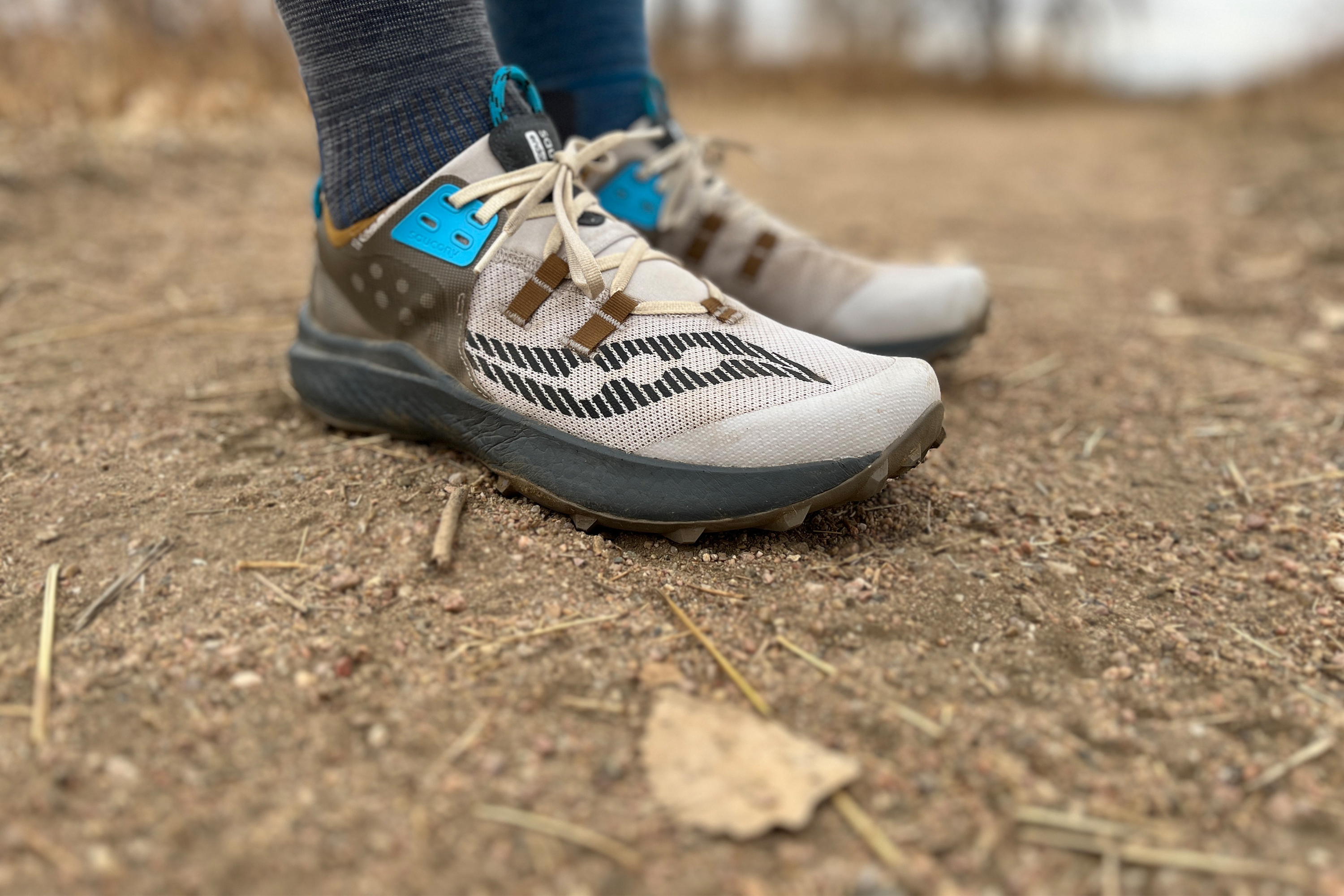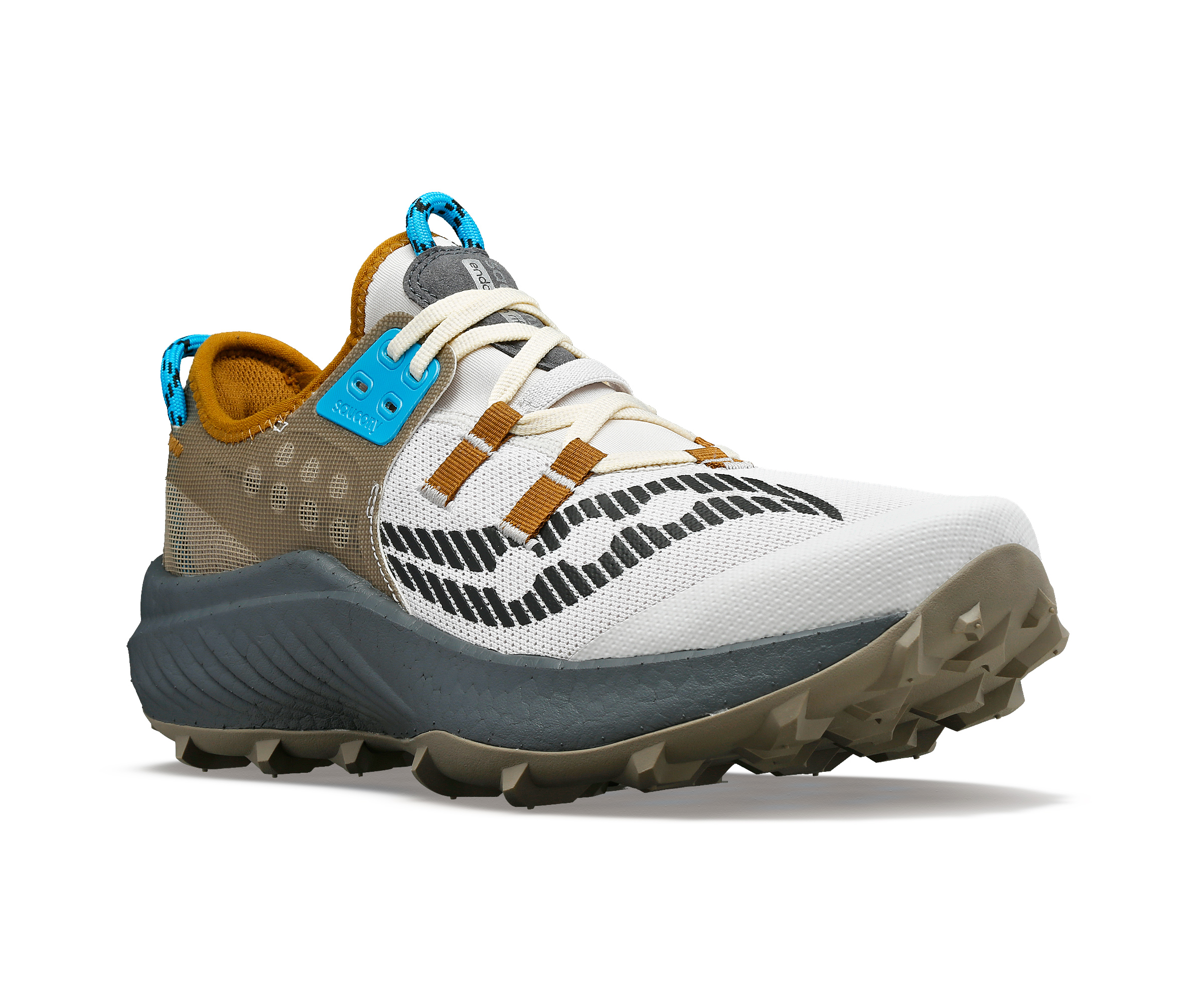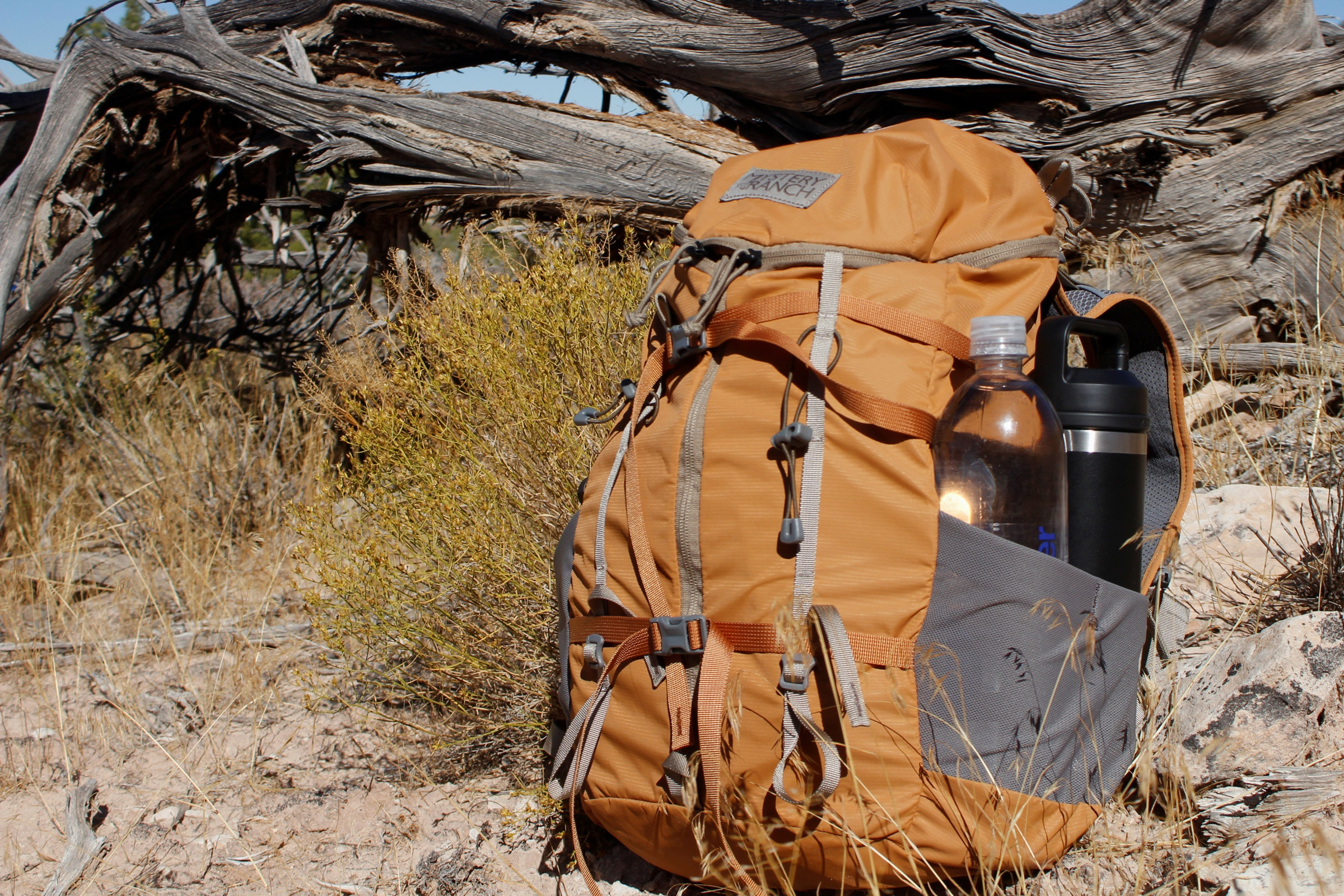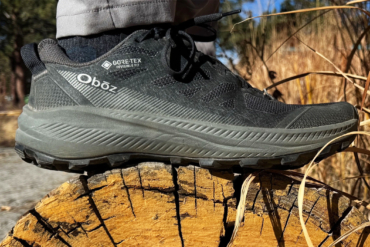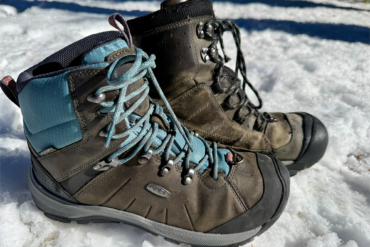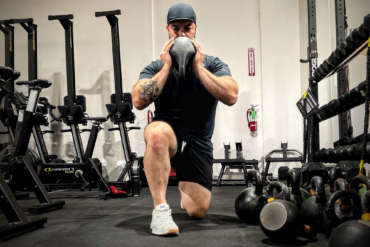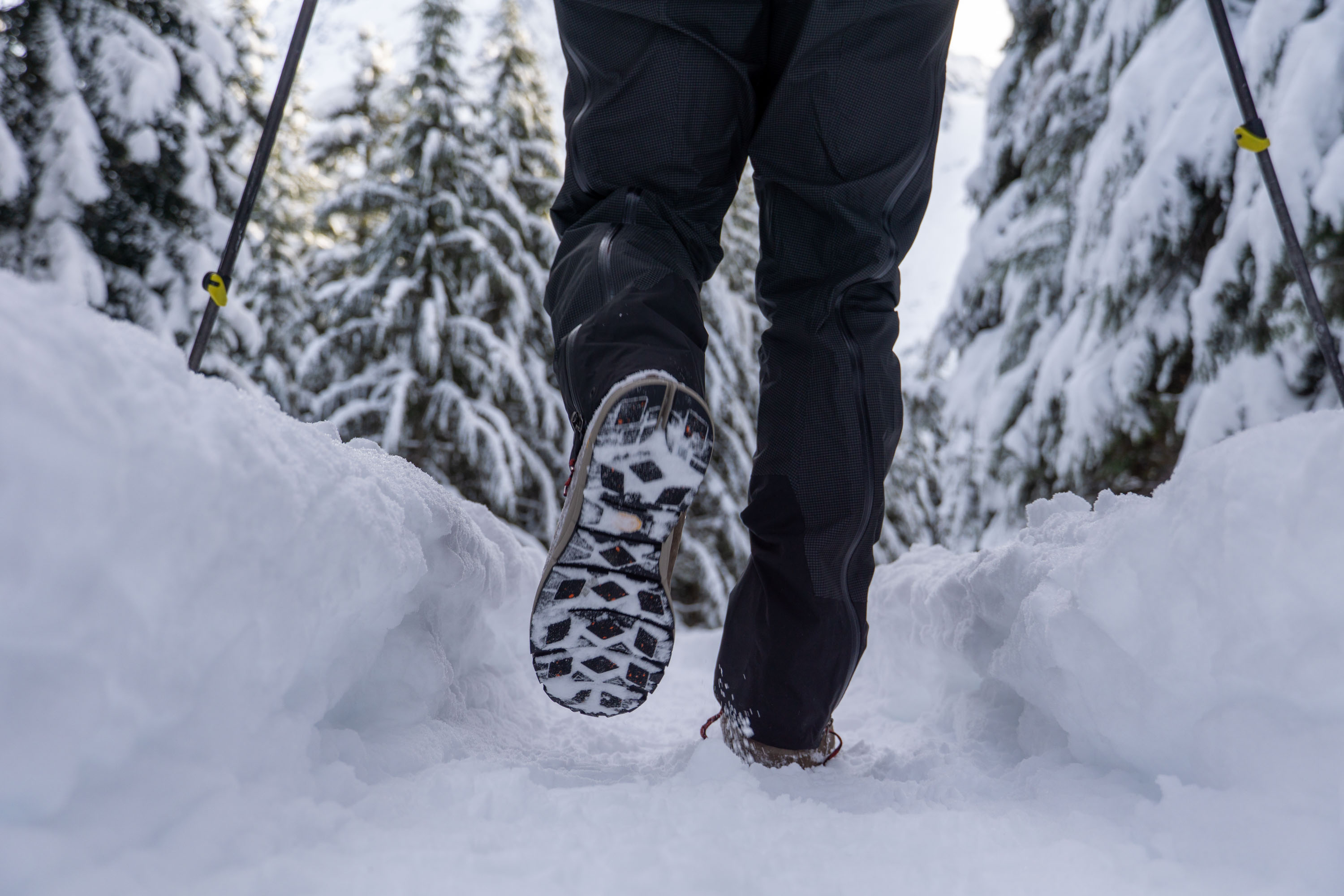It’s a brisk autumn day in Grand Teton National Park as I step onto the dry dirt trail in my new Saucony Endorphin Rift trail running shoes. The Grand looms large over the valley floor, bathed in bright golden leaves that pop against a pale blue sky. I head out to test the shoes along a trail that loops through the valley toward the base of the Grand Tetons.
A few hours earlier, I heard Saucony ultrarunner Katie Asmute sing the praises of these new shoes, which she was also wearing. She specifically highlighted Endorphin’s new Speedroll technology that pushes your energy forward while moving across rough terrain.
I have worn Saucony as my go-to running shoe for years and after talking to Katie about it, I noticed that even going up hills with this technology, it feels like you are moving with the ease as if you are going down (almost).
In short: The Saucony Endorphin Rift Trail Running shoe provides a lightweight, compact package with Speedroll technology to keep your energy always moving forward. It’s meant to be a light, springy, responsive, and capable trail shoe. From cruising on singletrack to clamoring over more technical trails and everything in between, the Endorphin Rift is a standout fast trail shoe that will tackle whatever you throw at it (with a few exceptions). The jury’s still out on whether its sizing is accurate, but otherwise, the shoe makes a ton of improvements on previous Endorphin models.
- Materials: SPEEDROLL Technology, PWRRUN PB foam cushioning, EVA sockliner, PWRTRAC outsole, webbing, laces
- Claimed weight: 8.6 oz. per shoe
- Verified weight: Men’s 10.2 oz. per shoe
- Trail outsole lug height: 4.5 mm
- Heel-to-toe offset: 6 mm (33mm heel/27mm forefoot)
- Sustainability: 100% recycled upper, recycled tongue and tongue lining, webbing and collar; all synthetic materials
- Price: $170
Pros
- Lightweight
- Performance of Speedroll technology on up and downhill terrain
- Very responsive yet comfortable
- Great cushioning
Cons
- Narrower footbox
- Durability could be better
- No carbon plate
Saucony Endorphin Rift Review
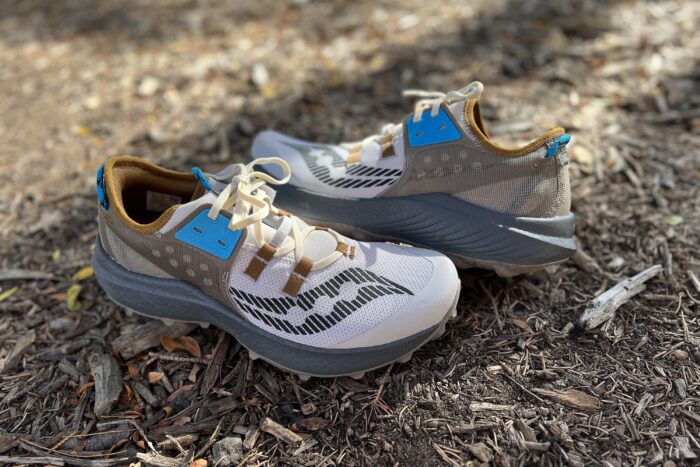
The Endorphin Rift shoes, the next progression of Saucony’s Endorphin Series, were created with trail runners and serious racers in mind. This shoe boasts two main features: the brand’s existing Speedroll Technology and “high-performance cushioning.” This translates on the trail to an extra-soft midsole and soft (but not too soft) heel that makes propelling yourself forward on the trail easier than ever.
According to Katie Pyle, senior product line manager for Saucony Trail, the Rift offers a more moderate stack height with slightly extended lugs on the sticky outsole for a fast yet secure run.
“The Endorphin Rift follows in the footsteps of the race-ready Endorphin Edge, but while the Edge is for race day, the Rift is a versatile speed shoe for every day and everyone,” Pyle said. “Though greatly inspired by the Edge, we intentionally omitted the Edge’s full carbon plate to allow for a more agile experience, with a thin rock guard providing flexible protection.”
Initial Impressions

Out of the box, these shoes look rugged yet light. They are sleek and are clearly designed with faster running in mind. The pair of shoes are ultralight, averaging a claimed 8.6 ounces for size 8.5. In my larger size, they weighed in at 10 ounces. They do run a bit small, so I’d recommend sizing up.
The Saucony Endorphin Rift is a bit of a departure from many of the company’s standard shoes that I’ve worn over the years. They are lightweight, yet durable enough to stand up to rougher trails. They have a sock-like upper that slips onto your foot.
The whole shoe has this soft feel that melds into the trail, making it feel as if you are not wearing anything at all — with the exception that there’s still tons of foam and comfort between your foot and the ground. During my trek through the Tetons, I took notes on its solid outsole, and the primary ingredient, PB cushioning foam, that really elevated this shoe in testing.
The Rift’s Fit
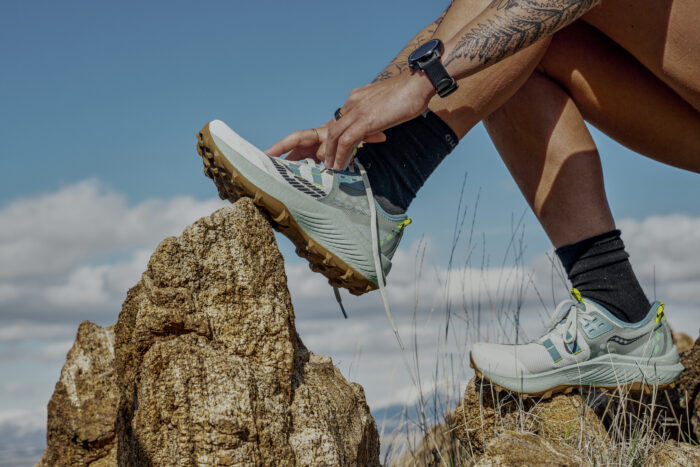
These shoes don’t really need breaking in, per se, but over time they seem to meld with my feet more and more. One minor drawback, easily fixable with a higher sock, is that the rear point of the shoe will rub against my heel if I wear a lower sock.
Aside from that, the upper ankle support is solid with the wrap on the shoe. The heel protection was something that has been an issue in prior Endorphin-series shoes, so the heel lock overall has also improved.
I have wider feet, so the sock-like opening requires a little more effort to get into than a traditional shoe with a tongue. However, once I am in, the fit hugs my feet comfortably and provides a secure stable fit on the trail. The fit runs a hair small; some other testers have noted the Endorphin Rift is a slightly shorter and also narrower fit.
My foot arch is slightly higher than average and the Endorphin Rift’s felt secure underfoot. The toebox is spacious — though not to the level of HOKAs or Altras — but does not have as much protection as some trail running shoes I’ve worn that are more overbuilt on the exterior. The Rift is missing features like a toecap, more waterproofing, etc. Which makes sense, given that it had to sacrifice weight somewhere.
Rift on the Trail
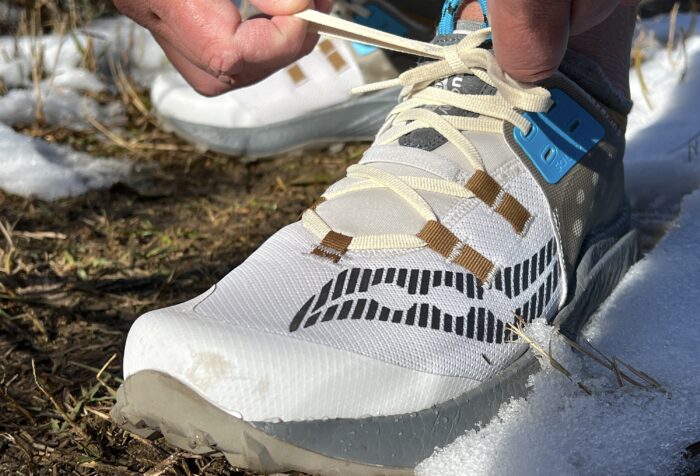
While the shoes did great in Wyoming for my initial 4-mile test, I’ve continued wearing these shoes throughout the fall. I’ve worked them out in the rugged Rockies of Colorado and found that they just improve with time. Even in some snow and muddy trails, the shoes and their oversized lugs kept me grounded and stable.
The shoes tackle tough terrain with ease and the traction with the lugs is really stronger in most conditions than expected from a light shoe. The biggest standout is still the Speedroll technology that gives you the feeling of support, and dare I say propulsion, even on the uphill stretches.
On takeoff, and with each foot strike, it feels a bit springy as if the shoe is pushing back on your foot. Its rebound is more pronounced on harder surfaces, such as a road or packed trail. The Rifts are a nice combination of comfort and speed.
The Speedroll technology is subtle; though, when it engages as you run, you can feel a noticeable difference. It also is more noticeable the faster you are moving, hence why it’s better for racing.
In addition to Asmute, Saucony has partnered with other runners competing in races such as the epic El Cruce, a 3-day 100K race through the Andes Mountains. With mileage like that to back these shoes, they will do fine for your average everyday trail racer to weekend warrior, up to a 50K serious runner.
Saucony Endorphin Rift vs. My Go-To Trail Running Shoe
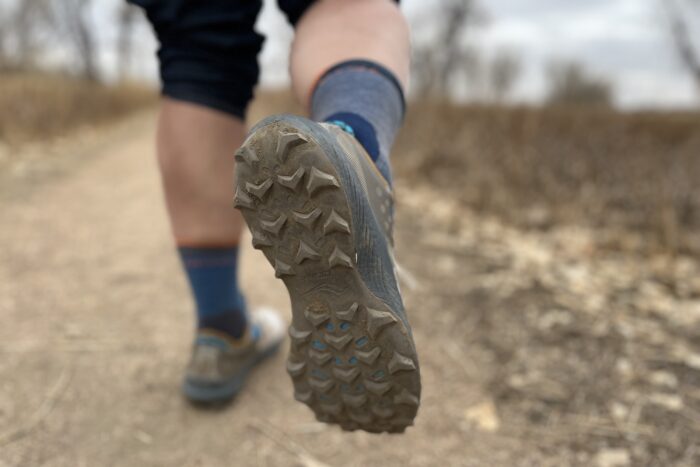
When putting the Saucony Endorphin Rift up against another of my favorite trail runners, the La Sportiva Ultra Raptor II, the two stand up strong on the trail.
The weight is a big difference between the two shoes. At 12.5 ounces, the La Sportiva is up to 4 ounces heavier; however, a lot of that is protection that the Endorphin Rifts lack. The lugs on each shoe are the same at 4.5 mm, and the 9mm drop for the La Sportiva is comparable to the 6mm drop on the Saucony Endorphin Rifts.
The lugs on the Rift are arrow-like and directional providing solid bite and grip. The Rift does not have a full rock plate, but it does have a flexible plate that provides a bit of protection. I wore these on some packed snow in Colorado, and they did hold up pretty well on a steeper slick surface.
But really, the lugs on the Rift are a bit excessive for what is a lightweight, ultra-responsive trail shoe design. The lugs on the Ultra Raptor II are even more aggressive and will win for me when it comes to traction for gnarlier trails.
While the Endorphin Rifts tout the Speedroll technology for better rebound and more comfortable cushioning, the Ultra Raptor II has a more capable and grippier rubber outsole, more protection from rocks, and a more stable heel.
The two shoes, while they have similar specs, have a whole lot of differences in look and feel. Arguably, these shoes are designed for two slightly different uses. That being said, I’ve run on plenty of trails with both and liked each of them. So if you haven’t yet tried Saucony’s Endorphin series — don’t knock ’em ’til you try ’em.
Saucony Endorphin Rift Review: Conclusion
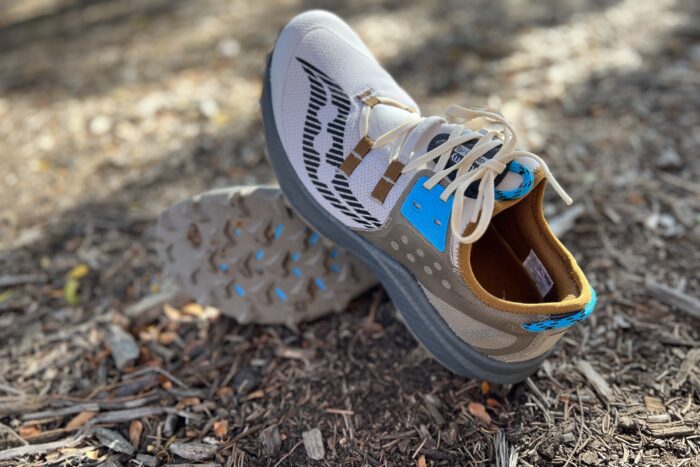
In the end, this shoe is comfortable while staying responsive, especially for faster runs, and is a great all-around shoe for the trail. If I was running on scree or loose gravel, a shoe with a full-length rock guard, like the Ultra Raptor II, would be better. And I’d probably choose a shoe with more waterproofing for wetter conditions on mixed terrain.
But for easy to moderate trails, and harder runs with lots of mileage? These Sauconys proved capable. Overall, the lighter and sleeker Endorphin Rifts are a comfortable option for longer, faster running. And they’re plenty performance-oriented for the everyday trail runner, too.
The Endorphin Rift is available in men’s and women’s sizing and sells for $170.
